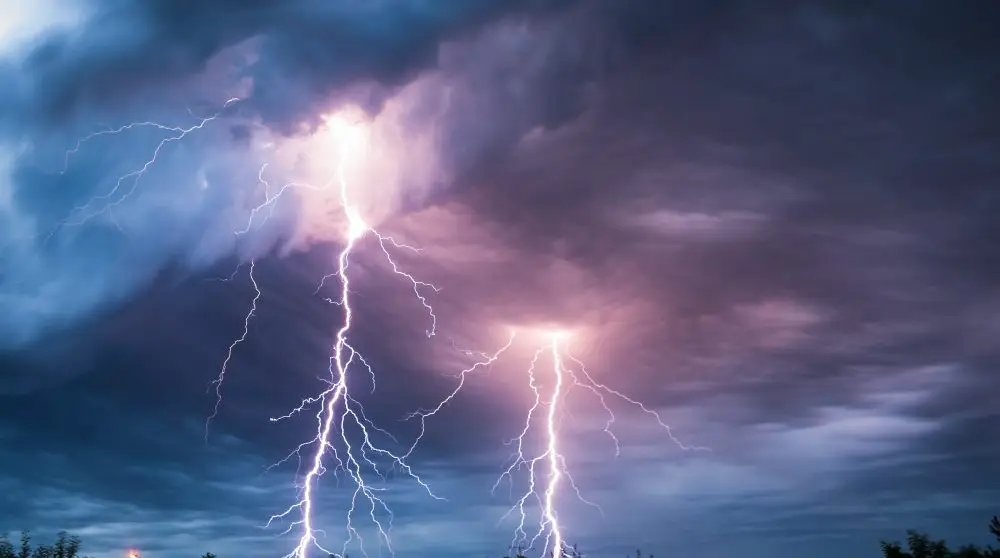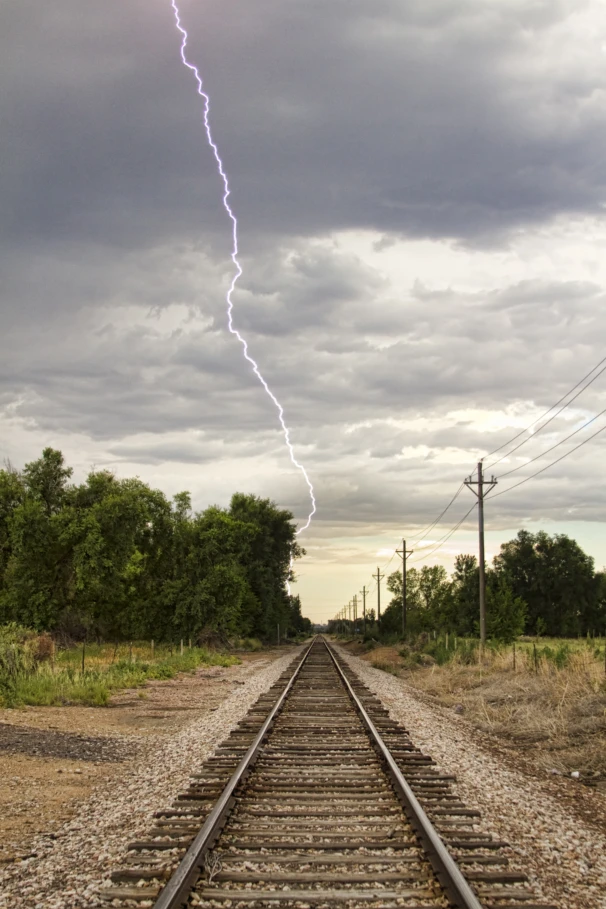Lightning Strikes


Lightning strikes are too close for comfort when you see the lightning flash and less than 30 seconds later, you hear the thunder.
That's the advice of senior meteorologist Julie Evans. Working at the Bureau of Meteorology, Julie is well aware of lightning's prominent place among Australia's most dangerous weather hazards.
Estimates say 5 to 10 deaths and more than 100 severe injuries are caused by lightning every year.
The number of seconds between a lightning flash and the sound of thunder is a way to determine how close the lightning was to you. Every 3 seconds that goes by represents a kilometre's distance. So, if the delay between lightning and thunder is under 30 seconds, it means the lightning is less than 10 kilometres away.

If you find yourself out in the open when a storm hits, you need to think and act quickly. Finding shelter is strongly advised.
A tree is not good shelter in an electrical storm. Try to find shelter inside a building, under a bus shelter or inside a car. Avoid water and objects that conduct electricity, including:
If you are out in the open, unable to move to safe shelter, crouch down, feet together, your head tucked down towards your chest. Aim to make yourself as small as you can. Out-stretched you would be a larger target with more chance of being struck by lightning.
Be aware that more than 50 per cent of lightning deaths occur once the storm has passed. Evans advises you to wait approximately 30 minutes after the last flash of lightning before you leave your shelter.
Being struck by lightning can have effects ranging from minor to life-threatening.
According to guidelines published in Annals of Emergency Medicine, 90 per cent of people struck by lightning survive, but they commonly suffer permanent after-effects and disabilities.

If you witness a person being struck by lightning, dial 000Â for emergency medical help.
Be aware the victim will not retain an electrical charge, so it is safe to touch them.
The person struck may be unconscious, disorientated, or unable to speak. They may also have stopped breathing.
If they are not breathing, follow DRSABCD immediately and continue until medical attention arrives.
If the victim is burnt or bleeding, apply appropriate first aid.
To learn more about how to avoid being struck by lightning, watch the following video:

October 1, 2024
Almost every job involves using the body to carry out some type of manual task. Some tasks may be hazardous, causing injuries such as musculoskeletal disorders (MSDs). Knowing how to manage them is a legal responsibility of all workplaces.

January 10, 2024
In Australia, workplace safety is a top priority, and First Aid plays a crucial role in ensuring the well-being of employees. Workplaces are expected to adhere to specific regulations and guidelines outlined by Safe Work Australia. How does your workplace stack up?

November 24, 2023
No matter how experienced you are as an outdoor activity leader, there are some things you should always do to keep your group safe. Nature can be unpredictable, and so it’s best to be prepared.